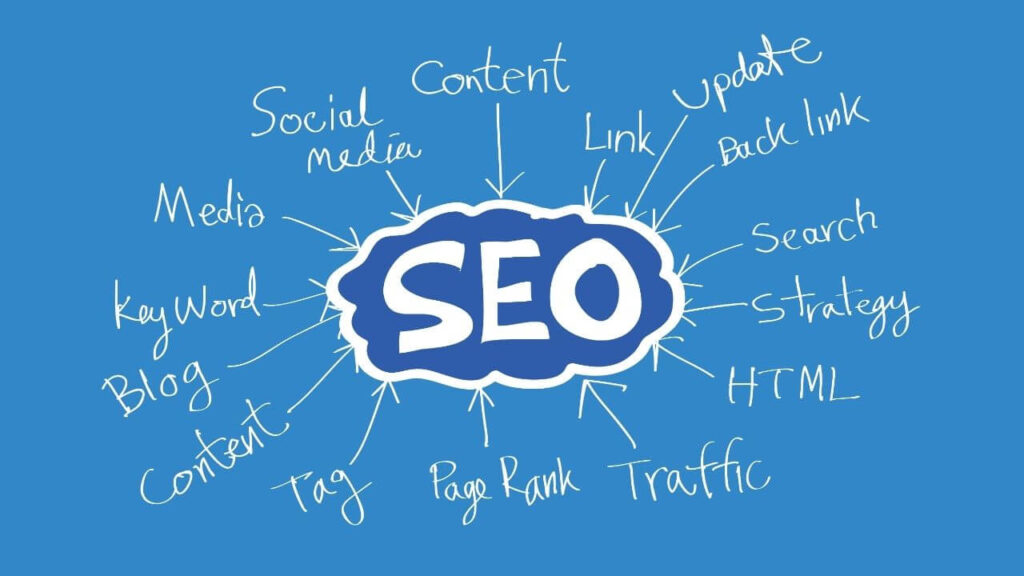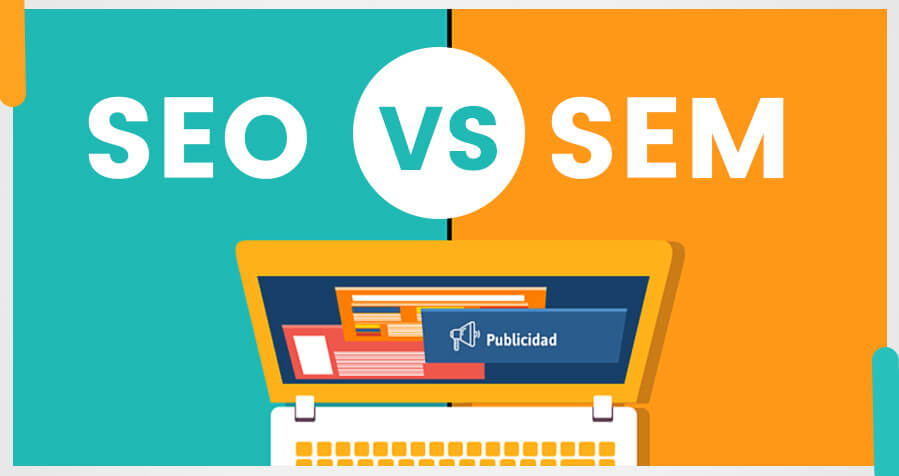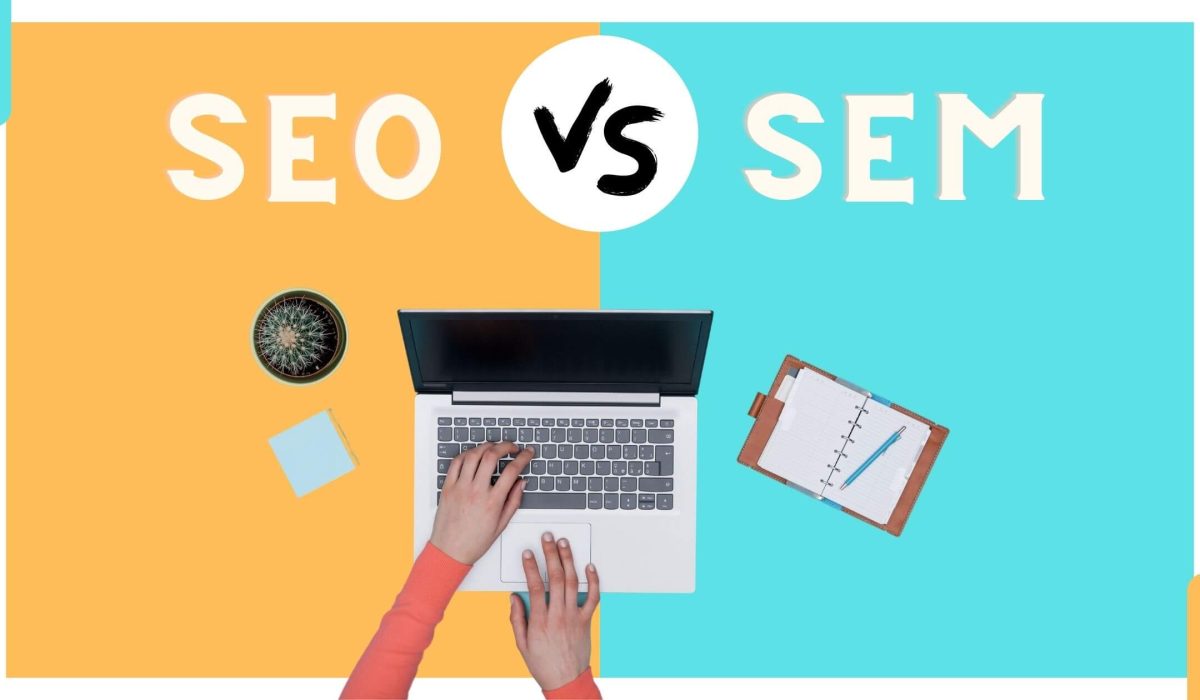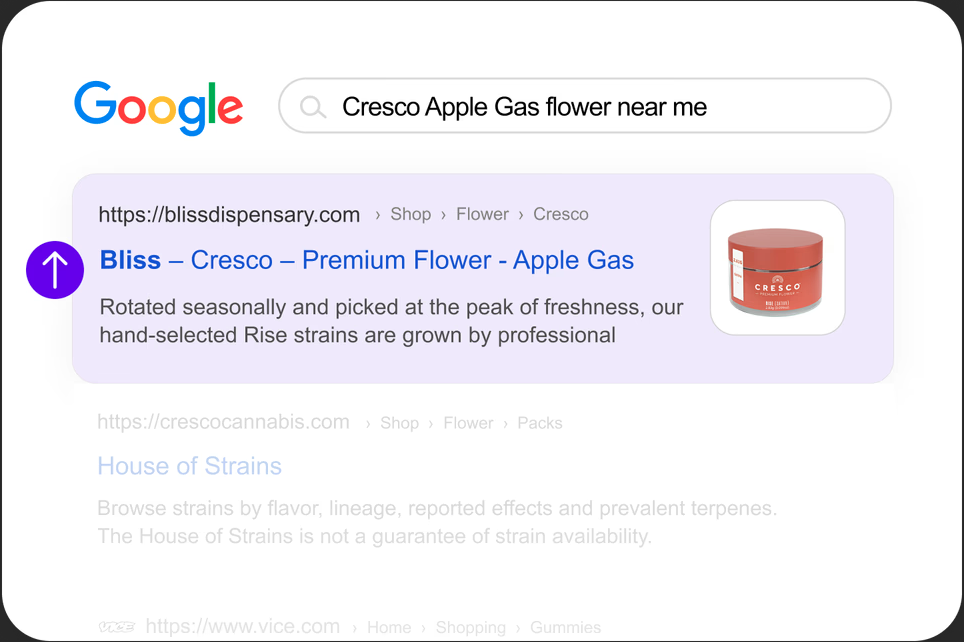The digital world is a convoluted atmosphere, filled with terminologies and technicalities that may be confusing for someone who has just launched or is planning to launch a website. However, you must’ve heard about SEO and SEM if you’re concerned with improving your website’s ranking positions on search results.
Competition to rank on these search results pages is more rampant than ever. The advantages are enormous: more traffic, visibility, increased leads, and improved conversions. Thus, brands incorporate tactics such as SEM and SEO for marketing to improve their visibility.
How do you distinguish them? That’s the reason for this article. We will explore all you need to know about SEO vs SEM.

What Is SEO?
Search engine optimization (SEO) is the process of implementing techniques to rank web pages organically on search results. Thus, organic SEO aims to make search engines see how valuable a website is to users for their search queries.
Search engines like Google and Bing crawl and index a website’s optimized keywords, title, content, tags, and external factors to rank it based on its relevance.
While SEO is organic, it takes a lot of time to pull off. If your website is relatively new, it might take a lot of time before seeing massive results. However, learning the basics of SEO is bound to benefit your website and campaigns in the long run. It is recommended to hire an SEO expert if the whole idea of optimizing your website organically is exhausting.
How Does SEO Work?
SEO looks at over 200+ factors to rank a website above others in search results. However, it is broken down into four categories:
● Keyword research. It simply understands the words and phrases that users utilize during a query. But more, the intent behind using such words. Thus, the results displayed on SERPs almost always match the user’s search intent. It would help if you used keyword research tools like SEMRush and Ahrefs to identify the words and content people are searching for.
● On-page SEO. These are all the actions you take within your website to ensure that it is fully optimized and ranks for a targeted keyword. On-page SEO includes internal linking, meta-tag optimization, great content, and content structure.
● Off-page SEO. This refers to all the actions that happen outside your website, but help improve your search rankings in the long run. Examples include backlinking, guest posts, local SEO, press releases, influencer marketing, podcasting, and many more.
● Technical SEO. This looks at all your actions to ensure that search engines crawl and index your web pages for organic search. This includes website design and development, mobile usability, user experience, page loading speed, website navigation, and many others.
What Is SEM?
Search engine marketing (SEM) deploys paid search marketing to rank websites during searches. Typically, you see results from paid searches at the top of search results before you see the ones from organic results.
In this battle of organic search vs paid search, the latter considerably yields instant results. Why? It uses pay-per-click (PPC) campaigns to bid for their positions. So, yes, you will be paying if you use SEM in digital marketing.
However, you’d only get to pay if your website is clicked on by users, and the campaign will become inactive as soon as the funding is exhausted. SEM strategy is essential for websites and brands looking to get their products and services to people without spending time optimizing their pages for SEO.
SEM metrics are also excellent for brand awareness, as your website will be visible to users when they search using targeted keywords. Because you’re implementing paid search, it’s pretty easy to monitor your ROI to see if it’s effective.
How Does SEM Work?
SEM position in digital marketing functions via purchasing keywords and ads on Google search. You typically have to allocate some of your funds to bid on a particular keyword that users might use during their search. Thus, when they hit those search queries, Google displays the paid search results before organic results.
SEM marketing comes in different forms. They include:
● Text-based ads.
● Visual-based ads, such as product listing or shopping ads.
Bid placement is the main focus of SEM strategy in digital marketing. This happens for most ecommerce-based keywords when they are entered on browsers.
Website managers will enter the platform on AdSense, where certain keywords are auctioned. They’d have to compete with other marketers or managers to bid for the keywords displayed. Google decides who wins the bid by looking at their maximum bid and quality score.
A maximum bid is how much you’re willing to pay for a click during the paid search. Quality score, on the other hand, is the quality of the ad copy the user sees when they click on your link. These two qualities are used to determine the winner of the paid ads.
Since Google has always placed content relevance as a ranking factor, you must get that part right in your campaign.

What Are the Differences Between SEO and SEM?
One of the major differences between SEM and SEO for marketing is that while search rankings are bought in the former, it is earned in the latter. So, while you have to pay a small price for organic SEO, you have to pay to use SEM for your marketing campaigns.
The bottom line is that with SEO, your ranking in SERPs results from the dedicated work you’ve done in your on-page, off-page, and technical SEO. Whereas the SEM position is dependent on paid advertising.
How Much Does It Cost?
It is essential to note that both SEO and SEM in digital marketing cost money to implement. SEO costs money when considering all the practices to rank web pages. However, regarding ROI, SEO packs a punch because it is long-term.
SEM is a quick fix that is paid per service. So, if you are looking for short term campaigns, then SEM could be a great option. But if you’re thinking of going long-term, you should deploy SEO strategies.
How Long Does It Take To See Results?
Time is also a huge factor when comparing SEO vs SEM. You will see instant results when you deploy SEM. The reason is that your web pages will be the first thing a user sees during a search. And you only get charged when they click on your pages. So, it’s easier to track and monitor your results.
On the other hand, SEO takes a considerable time to see results. It could take up to 60 days before your web pages get better positions on search results. How the results last for a very long time.
SEO vs. SEM: Advantages
One of the obvious advantages of SEO over SEM is that it builds trust with your target audience. It creates a positive perception from your target audience and search engines that know your content is relevant to search intent.
Another advantage is that you don’t need to pay any money for ad placement. Thus, it works 24/7, driving traffic to your website. You don’t have to worry about exhausting your ad funding and your SEM position being removed.
SEO vs. SEM: Disadvantages
SEO also has its demerits. While it is a sustainable marketing strategy, SEO must be maintained from time to time. It is not a one-time optimization, as your competitors can outrank you in search results.
Another seeming demerit is that SEO takes a lot of time to begin showing up on search results. Whereas SEM implementation is instant.
Conclusion
You can’t do without SEO and SEM when it comes to digital marketing. There’s no one better between them. It depends on your preference, budget, and marketing timeline.
It is recommended to contact a professional digital marketing agency if you don’t know how to implement any of the two strategies for your website.
Dispensary Growth is an innovative digital marketing firm tasked with improving your website performance and achieving tremendous results. Our services include website design and development, SEO marketing, content marketing, wireframing, and off-page SEO.
Reach out to us to see how we can help your brand.




